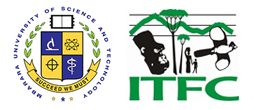Bwindi Impenetrable National Park (hereafter called Bwindi) is an Afromontane forest that has probably existed since the Pleistocene and Holocene times. The forest was first used by Batwa the for hunting and wild fruit/yams gathering up to the mid-16 agriculturists came and started clearing forest patches for farming.
In 1991, Bwindi Forest was gazetted a national park and restrictions on forest use by local people were imposed resulting in conflict between park managers and the local people. To mitigate the conflict, park management introduced a Multiple Use Programme (MUP) that involved local people accessing the forest for some livelihood resources such as plants for medicines and basketry.
Under the MUP, local people were allowed access to a few forest resources and not all important livelihood requirements were granted. Forest resources such as firewood, building poles, bush- meat, fruits, wild fruits, yams and fish were not permitted under the MUP.
Despite the several reviews carried out on Bwindi’s MUP, the programme has up to now failed to confirm to key definitions of collaborative forest management like elsewhere in other protected areas (PAs) of Uganda. The RUCs in Bwindi meet less frequently than those of other PAs.
Local people around Bwindi have lost interest in the RUC meetings and view forest access in Bwindi as being very restrictive. Furthermore, there is less cohesion and cooperation among the RUCs of Bwindi than those from other PAs.
Indeed through village and resource user interviews, this study found out that the most preferred forest resources for the local people around Bwindi were mainly those prohibited by the park when Bakiga and Bafumbira management. Also, there was a significant difference between the Batwa and the Bakiga, men and women in forest resource preferences.
To understand how Bwindi’s MUP contributes to local people’s livelihoods and income, this study carried out village interviews and market surveys around Bwindi. Results show that there was a significant difference in local people’s attitudes on benefits got from the MUP among three categories of parishes (non-multiple use, beekeeping zone and plant harvest zone parishes).
Local people involved in the MUP had the most positive attitudes than those not involved. There was a significant difference between the three categories of parishes in mean annual incomes from the sale of forest products. Beekeeping for honey is the most lucrative contributing to a mean annual income of 298,000ushs (114USD) per beekeeper. This study concluded that the MUP has helped contribute a small but important livelihood and income to the forest resource users around Bwindi.
To understand the ecological implications of harvesting the forest resources from Bwindi, a forest survey was carried. Results show that plant stem densities were highest in the harvest zones than in non-harvest zones.
Furthermore, non-harvest zones had more large-sized individuals than the harvest zones. Annual bark production of Ocotea usambarensis tree and annual stem growth rates of Piper guineense and Milletia dura were not significantly different between the two zones.
There was a significant relationship between environmental variables (% tree canopy cover and altitude) and stem densities of most plants. Multiple use guidelines have been proposed by this study to improve Bwindi’s MUP.
